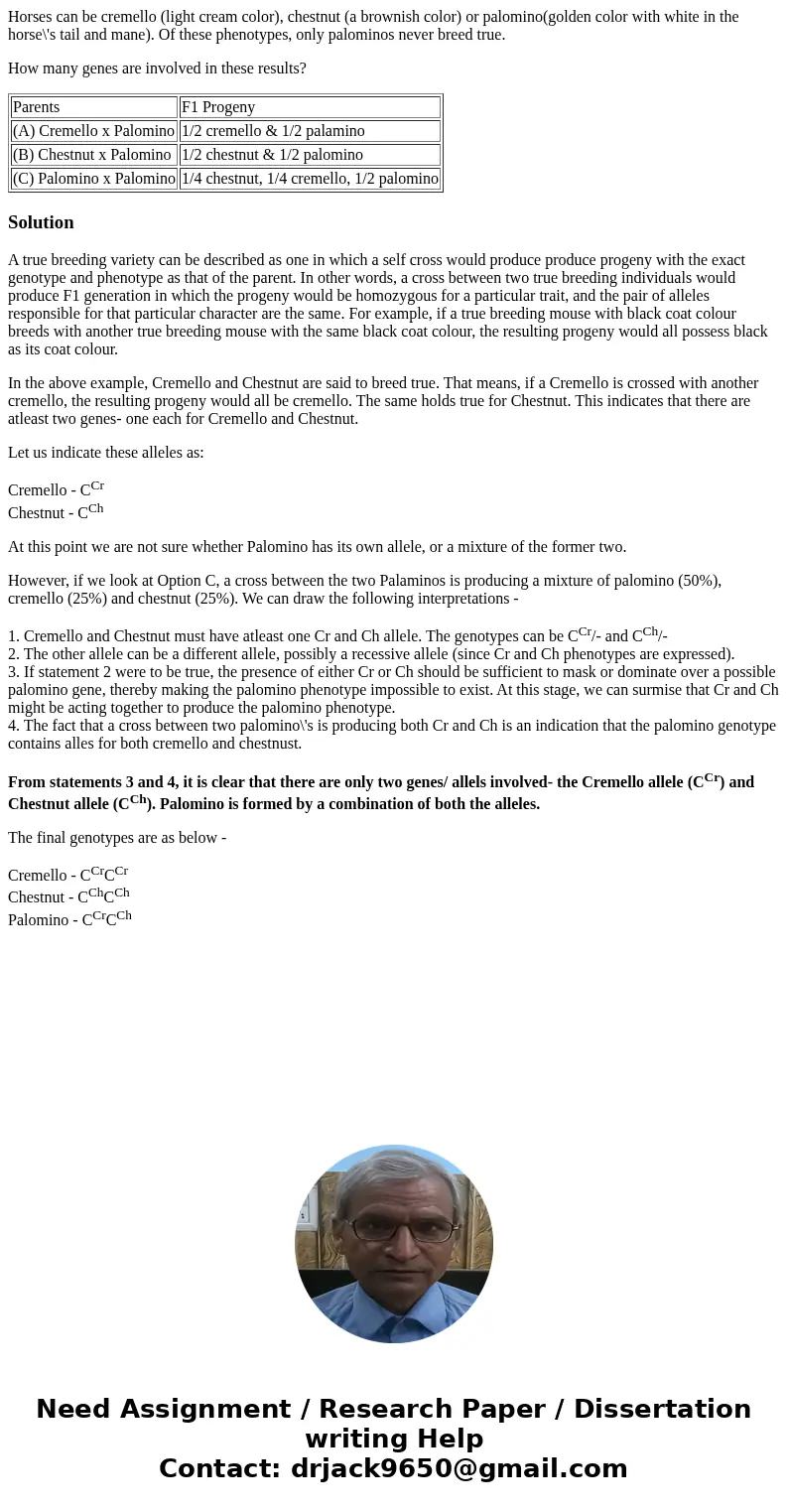Horses can be cremello light cream color chestnut a brownish
Horses can be cremello (light cream color), chestnut (a brownish color) or palomino(golden color with white in the horse\'s tail and mane). Of these phenotypes, only palominos never breed true.
How many genes are involved in these results?
| Parents | F1 Progeny |
| (A) Cremello x Palomino | 1/2 cremello & 1/2 palamino |
| (B) Chestnut x Palomino | 1/2 chestnut & 1/2 palomino |
| (C) Palomino x Palomino | 1/4 chestnut, 1/4 cremello, 1/2 palomino |
Solution
A true breeding variety can be described as one in which a self cross would produce produce progeny with the exact genotype and phenotype as that of the parent. In other words, a cross between two true breeding individuals would produce F1 generation in which the progeny would be homozygous for a particular trait, and the pair of alleles responsible for that particular character are the same. For example, if a true breeding mouse with black coat colour breeds with another true breeding mouse with the same black coat colour, the resulting progeny would all possess black as its coat colour.
In the above example, Cremello and Chestnut are said to breed true. That means, if a Cremello is crossed with another cremello, the resulting progeny would all be cremello. The same holds true for Chestnut. This indicates that there are atleast two genes- one each for Cremello and Chestnut.
Let us indicate these alleles as:
Cremello - CCr
Chestnut - CCh
At this point we are not sure whether Palomino has its own allele, or a mixture of the former two.
However, if we look at Option C, a cross between the two Palaminos is producing a mixture of palomino (50%), cremello (25%) and chestnut (25%). We can draw the following interpretations -
1. Cremello and Chestnut must have atleast one Cr and Ch allele. The genotypes can be CCr/- and CCh/-
2. The other allele can be a different allele, possibly a recessive allele (since Cr and Ch phenotypes are expressed).
3. If statement 2 were to be true, the presence of either Cr or Ch should be sufficient to mask or dominate over a possible palomino gene, thereby making the palomino phenotype impossible to exist. At this stage, we can surmise that Cr and Ch might be acting together to produce the palomino phenotype.
4. The fact that a cross between two palomino\'s is producing both Cr and Ch is an indication that the palomino genotype contains alles for both cremello and chestnust.
From statements 3 and 4, it is clear that there are only two genes/ allels involved- the Cremello allele (CCr) and Chestnut allele (CCh). Palomino is formed by a combination of both the alleles.
The final genotypes are as below -
Cremello - CCrCCr
Chestnut - CChCCh
Palomino - CCrCCh

 Homework Sourse
Homework Sourse